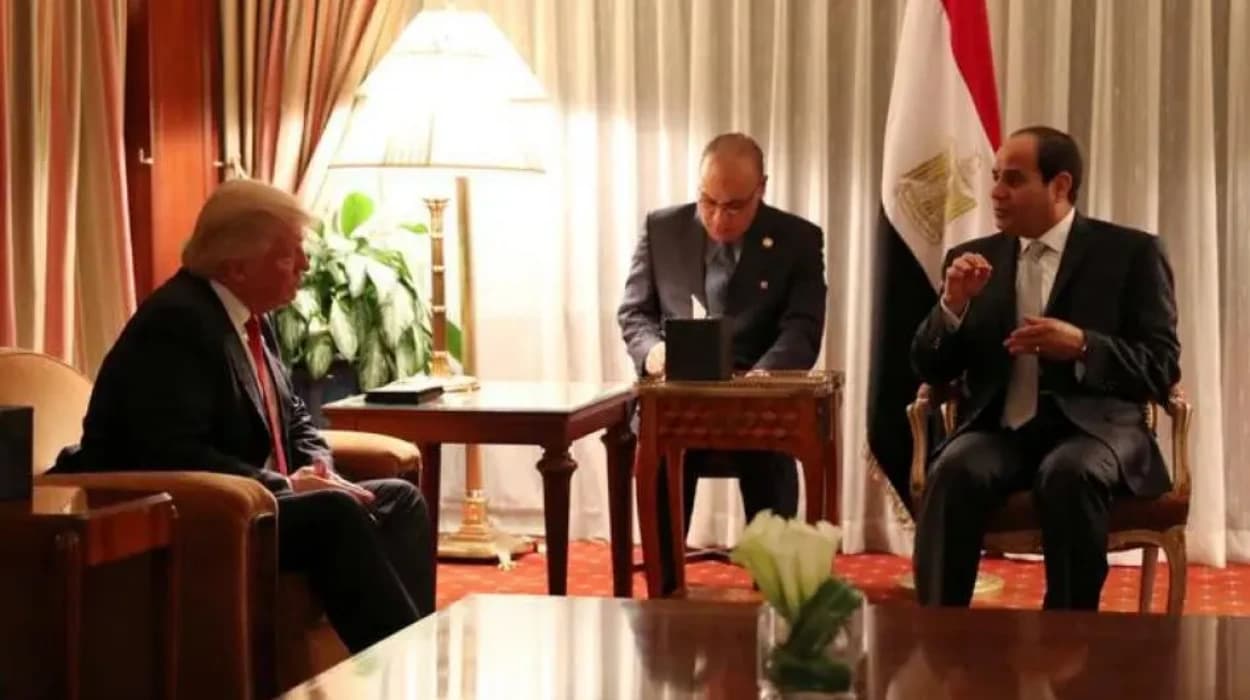US President Donald Trump arrived in Egypt’s Sharm el-Sheikh to co-chair an international summit on Gaza, following a US-brokered ceasefire and hostage release deal between Israel and Hamas. The summit, attended by over 20 world leaders, aims to solidify the ceasefire and advance post-war reconstruction and a new governance framework for Gaza.
Trump’s Arrival and Summit Opening
As reported by Mustafa Yagci of Anadolu Agency, President Donald Trump arrived in Egypt’s Red Sea resort city, Sharm el-Sheikh, on Monday
after visiting Israel. He was warmly welcomed by Egyptian President Abdel
Fattah al-Sisi on arrival, with both leaders set to co-chair the summit focused
on Gaza’s future and regional stability.
The global summit includes leaders from over 20 countries,
including British Prime Minister Keir Starmer, German Chancellor Friedrich
Merz, and Canadian Prime Minister Mark Carney, who gathered to discuss an end
to the two-year war between Israel and Hamas and to build a path to lasting
peace.
Context of the Gaza Conflict and Ceasefire
The summit follows a fragile ceasefire agreement brokered by
the US, in which Hamas released 20 living Israeli hostages in exchange for
nearly 2,000 Palestinian prisoners detained by Israel. This exchange marks a
critical step in de-escalating the conflict that erupted in October 2023.
According to Reuters, Israeli Prime Minister Benjamin Netanyahu declined to attend the summit, citing the proximity to a Jewish
holiday, although he addressed the Knesset during Trump’s visit earlier that
day.
During his visit to Israel, Trump hailed the ceasefire agreement as historic, calling it a
"dawn of a new Middle East,"
and
emphasised the need to convert military victories into peace and prosperity for
the region.
Goals and Proposals of the Summit
Egyptian President Abdel Fattah al-Sisi described the summit
as a "last chance" for peace in Gaza, aiming to end the war and
initiate a new chapter of peace and stability, aligning with Trump’s vision.
Trump’s peace plan outlines a phased approach:
- Immediate
ceasefire and full release of Israeli hostage
- Release
of nearly 2,000 Palestinian prisoners by Israel
- Gradual
Israeli withdrawal from Gaza
- Establishment
of a new governing mechanism for Gaza without Hamas participation
- Formation of a multinational security force to ensure stability and disarm Hamas
- These elements reflect a cooperative framework involving regional and international actors.
Challenges Ahead: Hostage Returns and Governance
The prisoner and hostage exchanges underscore ongoing
difficulties. The Hostages and Missing Families Forum for Israel called for
suspending the peace deal until all deceased hostages are returned, noting that
only four bodies were handed over despite Hamas holding many more.
Another challenge lies in the future governance of Gaza. The
summit must negotiate establishing a governing structure excluding Hamas, the
disarmament of militant groups, and determining the full extent of Israel’s
withdrawal.
Humanitarian efforts are also a focus, with aid agencies
preparing to deliver much-needed support long withheld, helping hundreds of
thousands of Palestinians return to their homes.
International Participation and Statements
Trum President Trump credited Egyptian leadership for
playing an "instrumental" role in the ceasefire negotiations due to
Hamas’s respect for Egypt’s government. Secretary of State Marco Rubio
highlighted Egypt’s continuing key role in the peace process.
Leaders from Europe, North America, and the Middle East are united in pushing the peace agenda forward. The Egyptian and US presidents were expected to issue a joint statement at the summit’s conclusion outlining next steps.
Trump’s visit, described as "very special," symbolises a potential turning point in the Middle East. The unfolding events after two years of brutal conflict have created a cautious optimism for lasting peace, though significant challenges remain on the ground.
The delicate moments are further underscored by the extensive destruction in Gaza, with over 67,000 Palestinians killed and severe infrastructure damage making reconstruction urgent.
President Donald Trump praised Egyptian President Abdel Fattah el-Sisi for playing an "instrumental" role in negotiating the ceasefire agreement between Israel and Hamas, highlighting Hamas's respect for Egypt’s leadership as crucial in the peace process. Trump described the recently signed peace plan as a historic breakthrough, declaring that momentum now favours a
"great, glorious, and lasting peace"
in the Middle East. Speaking alongside President el-Sisi, Trump acknowledged that the next phase of the peace deal is underway, emphasising the need for reconstruction and clean-up in Gaza. Secretary of State Marco Rubio also commended Egypt’s ongoing "phenomenal" participation and predicted Cairo’s key role in the implementation of the peace agreement. Despite these developments, the Hostages and Missing Families Forum called for suspending the peace deal until all deceased hostages are returned from Gaza. Israeli Prime Minister Benjamin Netanyahu, while addressing the Knesset earlier, expressed support for the ceasefire but chose not to attend the summit due to the commencement of a Jewish holiday. President Trump, in his address to Israel’s parliament, hailed the ceasefire as a "historic dawn" and urged the region and Iran to seize the opportunity for peace and stability under the new agreement.
